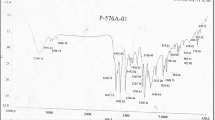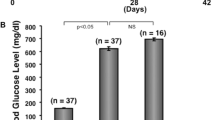Abstract
Acute wounds do not generally require professional treatment modalities and heal in a predictable fashion, but chronic wounds are mainly accompanied with infection and prolonged inflammation, leading to healing impairments and continuous tissue degradation. Although a vast amount of products have been introduced in the market, claiming to provide a better optimization of local and systemic conditions of patients, they do not meet the expectations due to being expensive and not easily accessible, requiring wound care facilities, having patient-specific response, low efficiency, and severe side-effects. In this sense, developing new, safe, self-applicable, effective, and cheap wound care products with broad-range antimicrobial activity is still an attractive area of international research. In the present work, boron derivatives [boric acid and sodium pentaborate pentahydrate (NaB)] were evaluated for their antimicrobial activity, proliferation, migratory, angiogenesis, gene, and growth factor expression promoting effects on dermal cells in vitro. In addition, boron-containing hydrogel formulation was examined for its wound healing promoting potential using full-thickness wound model in streptozotocin-induced diabetic rats. The results revealed that while both boron compounds significantly increased proliferation, migration, vital growth factor, and gene expression levels of dermal cells along with displaying remarkable antimicrobial effects against bacteria, yeast, and fungi, NaB displayed greater antimicrobial properties as well as gene and growth factor expression inductive effects. Animal studies proved that NaB-containing gel formulation enhanced wound healing rate of diabetic animals and histopathological scores. Overall data suggest a potential promising therapeutic option for the management of chronic wounds but further studies are highly warranted to determine signaling pathways and target metabolisms in which boron is involved to elucidate the limitations and extend its use in clinics.






Similar content being viewed by others
References
Wetzler C, Kämpfer H, Stallmeyer B, Pfeilschifter J, Frank S (2000) Large and sustained induction of chemokines during impaired wound healing in the genetically diabetic mouse: prolonged persistence of neutrophils and macrophages during the late phase of repair. J Invest Dermatol 115:245–253
Brem H, Tomic-Canic M (2007) Cellular and molecular basis of wound healing in diabetes. J Clin Invest 117:1219–1222
Guo S, DiPietro LA (2010) Factors affecting wound healing. J Dent Res 89:219–229
Schirmer S, Ritter R-G, Fansa H (2013) Vascular surgery, microsurgery and supramicrosurgery for treatment of chronic diabetic foot ulcers to prevent amputations. PLoS One 8:e74704
Singh N, Armstrong DG, Lipsky BA (2005) Preventing foot ulcers in patients with diabetes. JAMA 293:217–228
Braun LR, Fisk WA, Lev-Tov H, Kirsner RS, Isseroff RR (2014) Diabetic foot ulcer: an evidence-based treatment update. Am J Clin Dermatol 15:267–281
Brown P, Bellaloui N, Wimmer M, Bassil E, Ruiz J, Hu H, Pfeffer H, Dannel F, Römheld V (2002) Boron in plant biology. Plant Biol 4:205–223
Bharti VK, Gupta M, Lall D (2008) Ameliorative effects of boron on serum profile in buffalo (Bubalus bubalis) fed high fluoride ration. Trop Anim Health Prod 40:111–116
Kot FS (2009) Boron sources, speciation and its potential impact on health. Rev Environ Sci Biotechnol 8:3–28
Nielsen FH (2014) Update on human health effects of boron. J Trace Elem Med Biol 28:383–387
Samman S, Foster M, Hunter D (2011) The role of boron in human nutrition and metabolism. CRC Press, New York
Borrelly J, Blech M, Grosdidier G, Martin-Thomas C, Hartemann P (1990) Contribution of a 3 % solution of boric acid in the treatment of deep wounds with loss of substance. Ann Chir Plast Esthet 36:65–69
Nzietchueng RM, Dousset B, Franck P, Benderdour M, Nabet P, Hess K (2002) Mechanisms implicated in the effects of boron on wound healing. J Trace Elem Med Biol 16:239–244
Chebassier N, Ouijja EH, Viegas I, Dreno B (2004) Stimulatory effect of boron and manganese salts on keratinocyte migration. Acta Derm Venereol 84:191–194
Doğan A, Demirci S, Çağlayan AB, Kılıç E, Günal MY, Uslu Ü, Cumbul A, Şahin F (2014) Sodium pentaborate pentahydrate and pluronic containing hydrogel increases cutaneous wound healing in vitro and in vivo. Biol Trace Elem Res 162:72–79
Demirci S, Doğan A, Karakuş E, Halıcı Z, Topçu A, Demirci E, Sahin F (2015) Boron and poloxamer (F68 and F127) containing hydrogel formulation for burn wound healing. Biol Trace Elem Res 168:169–180
Halbert CL, Alexander IE, Wolgamot GM, Miller AD (1995) Adeno-associated virus vectors transduce primary cells much less efficiently than immortalized cells. J Virol 69:1473–1479
Kim HG, Shrestha B, Lim SY, Yoon DH, Chang WC, Shin D-J, Han SK, Park SM, Park JH, Park HI (2006) Cordycepin inhibits lipopolysaccharide-induced inflammation by the suppression of NF-κB through Akt and p38 inhibition in RAW 264.7 macrophage cells. Eur J Pharmacol 545:192–199
Tang L, Ma X, Tian Q, Cheng Y, Yao H, Liu Z, Qu X, Han X (2013) Inhibition of angiogenesis and invasion by DMBT is mediated by downregulation of VEGF and MMP-9 through Akt pathway in MDA-MB-231 breast cancer cells. Expert Opin Biol Ther 56:204–213
Lee Y-H, Chang J-J, Chien C-T, Yang M-C, Chien H-F (2012) Antioxidant sol-gel improves cutaneous wound healing in streptozotocin-induced diabetic rats. Exp Diabetes Res 2012:1–11. doi:10.1155/2012/504693
Bancroft JD, Gamble M (2008) Theory and practice of histological techniques. Elsevier, Amsterdam
Greenhalgh DG, Sprugel K, Murray M, Ross R (1990) PDGF and FGF stimulate wound healing in the genetically diabetic mouse. Am J Pathol 136:1235–1246
Özcan KM, Sitesi Y, Blok A (2005) The efficacy of boric acid in otomycosis: an in vitro study. Mediter J Otol 2:1–4
Yilmaz MT (2012) Minimum inhibitory and minimum bactericidal concentrations of boron compounds against several bacterial strains. Turk J Med Sci 42:1423–1429
Scorei RI, Ciofrangeanu C, Ion R, Cimpean A, Galateanu B, Mitran V, Iordachescu D (2010) In vitro effects of calcium fructoborate upon production of inflammatory mediators by LPS-stimulated RAW 264.7 macrophages. Biol Trace Elem Res 135:334–344
Gurtner GC, Werner S, Barrandon Y, Longaker MT (2008) Wound repair and regeneration. Nature 453:314–321
Schultz GS, Wysocki A (2009) Interactions between extracellular matrix and growth factors in wound healing. Wound Repair Regen 17:153–162
Wysocki A, Grinnell F (1990) Fibronectin profiles in normal and chronic wound fluid. Lab Invest 63:825–831
Li J, Chen J, Kirsner R (2007) Pathophysiology of acute wound healing. Clin Dermatol 25:9–18
Falanga V (2005) Wound healing and its impairment in the diabetic foot. Lancet 366:1736–1743
Uchiyama A, Yamada K, Ogino S, Yokoyama Y, Takeuchi Y, Udey MC, Ishikawa O, S-i Motegi (2014) MFG-E8 regulates angiogenesis in cutaneous wound healing. Am J Pathol 184:1981–1990
Berger AC, Feldman AL, Gnant MF, Kruger EA, Sim BKL, Hewitt S, Figg WD, Alexander HR, Libutti SK (2000) The angiogenesis inhibitor, endostatin, does not affect murine cutaneous wound healing. J Surg Res 91:26–31
Lange-Asschenfeldt B, Velasco P, Streit M, Hawighorst T, Pike SE, Tosato G, Detmar M (2001) The angiogenesis inhibitor vasostatin does not impair wound healing at tumor-inhibiting doses. J Invest Dermatol 117:1036–1041
Nanney LB, Wamil BD, Whitsitt J, Cardwell NL, Davidson JM, Yan H-P, Hellerqvist CG (2001) CM101 stimulates cutaneous wound healing through an anti-angiogenic mechanism. Angiogenesis 4:61–70
Szpaderska A, Walsh C, Steinberg M, DiPietro L (2005) Distinct patterns of angiogenesis in oral and skin wounds. J Dent Res 84:309–314
Barrientos S, Brem H, Stojadinovic O, Tomic-Canic M (2014) Clinical application of growth factors and cytokines in wound healing. Wound Repair Regen 22:569–578
Branski LK, Gauglitz GG, Herndon DN, Jeschke MG (2009) A review of gene and stem cell therapy in cutaneous wound healing. Burns 35:171–180
Gauglitz GG, Jeschke MG (2011) Combined gene and stem cell therapy for cutaneous wound healing. Mol Pharm 8:1471–1479
Werner S, Grose R (2003) Regulation of wound healing by growth factors and cytokines. Physiol Rev 83:835–870
Kiwanuka E, Junker J, Eriksson E (2012) Harnessing growth factors to influence wound healing. Clin Plast Surg 39:239–248
Pakyari M, Farrokhi A, Maharlooei MK, Ghahary A (2013) Critical role of transforming growth factor beta in different phases of wound healing. Adv Wound Care 2:215–224
Dzondo-Gadet M, Mayap-Nzietchueng R, Hess K, Nabet P, Belleville F, Dousset B (2002) Action of boron at the molecular level. Biol Trace Elem Res 85:23–33
Huang P, Li S, Han M, Xiao Z, Yang R, Han ZC (2005) Autologous transplantation of granulocyte colony–stimulating factor–mobilized peripheral blood mononuclear cells improves critical limb ischemia in diabetes. Diabetes Care 28:2155–2160
Barrientos S, Stojadinovic O, Golinko MS, Brem H, Tomic-Canic M (2008) Growth factors and cytokines in wound healing. Wound Repair Regen 16:585–601
Blech M, Martin C, Borrelly J, Hartemann P (1990) Treatment of deep wounds with loss of tissue. Value of a 3 percent boric acid solution. Presse Med 19:1050–1052
Author information
Authors and Affiliations
Corresponding author
Ethics declarations
Conflict of interest
The authors declare that they have no conflict of interest.
Electronic supplementary material
Below is the link to the electronic supplementary material.
11010_2016_2719_MOESM1_ESM.tif
Relative expression levels of growth factors secreted from human fibroblasts and HaCaT cells treated with 100µg/ml boric acid (BA) or sodium pentaborate pentahydrate (NaB) for 24h. The results were given relative to only growth medium treated control cells. Orange color indicates statistically different expressions.
Supplementary material 1 (TIFF 616 kb)
Rights and permissions
About this article
Cite this article
Demirci, S., Doğan, A., Aydın, S. et al. Boron promotes streptozotocin-induced diabetic wound healing: roles in cell proliferation and migration, growth factor expression, and inflammation. Mol Cell Biochem 417, 119–133 (2016). https://doi.org/10.1007/s11010-016-2719-9
Received:
Accepted:
Published:
Issue Date:
DOI: https://doi.org/10.1007/s11010-016-2719-9




